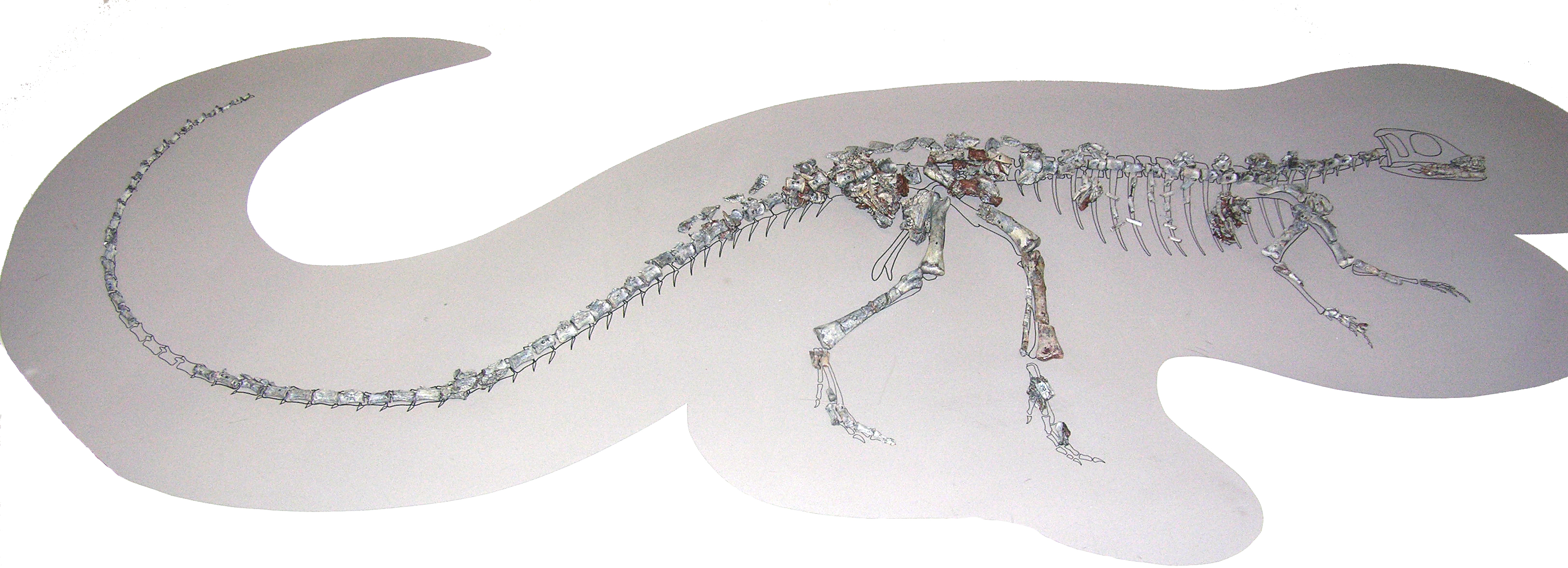
Published on Oct 8, 2018 in the Arizona Daily Sun
For decades, dinosaur bones and other fossils were kept in wooden drawers on the Museum of Northern Arizona research campus. Now the paleontology storage is getting an upgrade, the museum equivalent of swapping out an old wooden dresser with sticky drawers for a well-designed walk-in closet.
Instead of shirts and shoes, 23 new Delta Designs cabinets will hold 600 million years of fossil history for the region. The paleontology collection provides a rich and varied record of life of western North America, from sea-dwelling invertebrates of the Cambrian, to dinosaurs of the Mesozoic, and mammoths and ground sloths of the Ice Age.
Unlike home clothes closets, the new mobile storage cabinets will roll on rails, making it possible to store more in the 1,400 sq. ft. paleontology collection storage area.
There’s a lot to store. The paleontology collection includes 19,554 specimens of fossil vertebrates, invertebrates, and plants. One specimen may be a single bone or a group of 300 brachiopod shells, so the actual number of individual objects in the collection is at least 150,000.
The current project, supported by a $249,495 grant from the Institute of Museum and Library Services, will upgrade storage for nearly half the paleontology collection, starting with the most scientifically important specimens. By the time the project is completed in 2021, MNA plans to find funding to upgrade the rest of the storage.
For almost three decades the museum has been upgrading its facilities for storing and preserving collections, as resources have allowed. A private donation in 2004 provided funding for construction of the Easton Collection Center, a LEED platinum certified, state-of-the-art storage facility. The Easton Collection Center opened in 2009 and now holds the ethnology, anthropology, fine arts, zoology, botany and archival collections. However, there wasn’t space in the new collection center for all the museum collections, so geology and paleontology specimens stayed in the Geology Building.
In the Geology Building, the fossils are currently stored in 145 antiquated, metal-clad wooden cabinets with unsealed wooden drawers. Built by MNA staff in the 1960s, the cabinets vary in size and the wooden drawers swell and stick on drawer glides. Many of the cabinet doors are warped and ill-fitting. Most of the cabinets are overcrowded or at capacity.
“It is clear from the images that over-crowded and inappropriate storage cabinets and drawers are greatly affecting the condition of the collection,” wrote one of the proposal reviewers.
The fossils deserve better. The museum paleontology collection contains 422 type specimens including 181 holotypes. These irreplaceable type specimens are used in the description of species new to science and are frequently accessed by visiting researchers. One of these significant specimens, illustrated here, is the Jurassic aged holotype of Scutellosaurus lawleri, one of the oldest ornithischian dinosaurs, a specimen important to understanding the history of the origin and global diversification of dinosaurs in general. Cretaceous holdings include new species of marine plesiosaurs, dinosaurs, and thousands of individual mammal teeth and jaws that document the origin of modern placental and marsupial mammals. The collection also contains Devonian armored fish, Paleozoic invertebrates, Permian sharks, fossil tracks, Cenozoic vertebrates, and important Pleistocene and Holocene specimens.
“There is no doubt that this is a significant paleontology collection,” wrote one reviewer.
The paleontology collection is widely cited and actively used by researchers. About 22% of the collection, or 4,288 specimens, have been used in scholarly papers. In the last 18 years, 452 researchers from 171 scientific institutions have conducted research on MNA’s fossil collection.
As part of the project, significant specimens will be photographed and added to online databases. People anywhere in the world will be able to view photos and information about the specimens through the Museum of Northern Arizona website (musnaz.org) and iDigBio, an online database used by scholars and the general public.
In addition to new cabinets, this grant will allow the museum to hire a Fossil Preparator, consult with an Industrial Hygienist to analyze the storage area for potential health and safety issues, and update and completely document catalog records to improve specimen data accuracy. At the end of the project, the environmental conditions under which MNA’s paleontology specimens are stored will be improved, and the specimens will be physically secured and more accessible to researchers and the general public.

